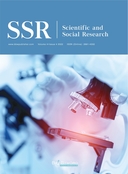Abstract
The study of semantic prosody has gradually become a focus of research in linguistics. By retrieving and comparing the noun “issue” in CLEC (Chinese Learner English Corpus) and COCA (Corpus of Contemporary American English), this paper intends to explore the similarities and difficulties on the semantic prosody of the noun “issue” between Chinese English learners and Americans.
References
Louw B, 1993, Irony in the Text or Insincerity in the Writer? The Diagnostic Potential of Semantic Prosodies, in Baker M, Francis G, Tognini-Bonelli E (eds), Text and Technology: In Honour of John Sinclair, John Benjamins, Amsterdam.
Sinclair J, 1996, Corpus, Concordance, Collocation, Oxford University Press, Oxford.
Sinclair J, 1996, The Search for Units of Meaning. Textus, 9(1): 75-106.
Hoey M, 2000, A World Beyond Collocation: New Perspectives on Vocabulary Teaching, in Lewis M (ed), Teaching Collocations, Language Teaching Publications, Hove.
Sinclair J, (ed) 1995, Collins COBUILD English Dictionary, Collins, London.
Nelson M, 2006, Semantic Associations in Business English: A Corpus Based Analysis. English for Specific Purpose, 25(2): 217-234.
Hunston S, 2002, Corpora in Applied Linguistics, Cambridge University Press, Cambridge.
Channell J, 2000, Corpus-Based Analysis of Evaluative Lexis, in Hunston S, Thompson G (eds.), Evaluation in Text: Authorial Stance and the Construction of Discourse, Oxford University Press, Oxford, UK, 38-55.
Huston S, Francis G, 2000, Pattern Grammar – A Corpus-Driven Approach to the Lexical Grammar of English, John Benjamins, Amsterdam and Philadelphia, 5-137.
Deng YC, Wang TS, 2005, Statistical Method and Computer Implementation of Word Collocation Extraction. Audio-visual Teaching of Foreign Languages, 2005(5): 25-28.
Benson M, Benson E, Ilson RF, 1986, The BBI Combinatory Dictionary, John Benjamins Publishing House.
Wei N, 2002, Corpus-Based and Corpus-Driven Approaches to the Study of Collocation. Contemporary Linguistics, 2: 101-114.
